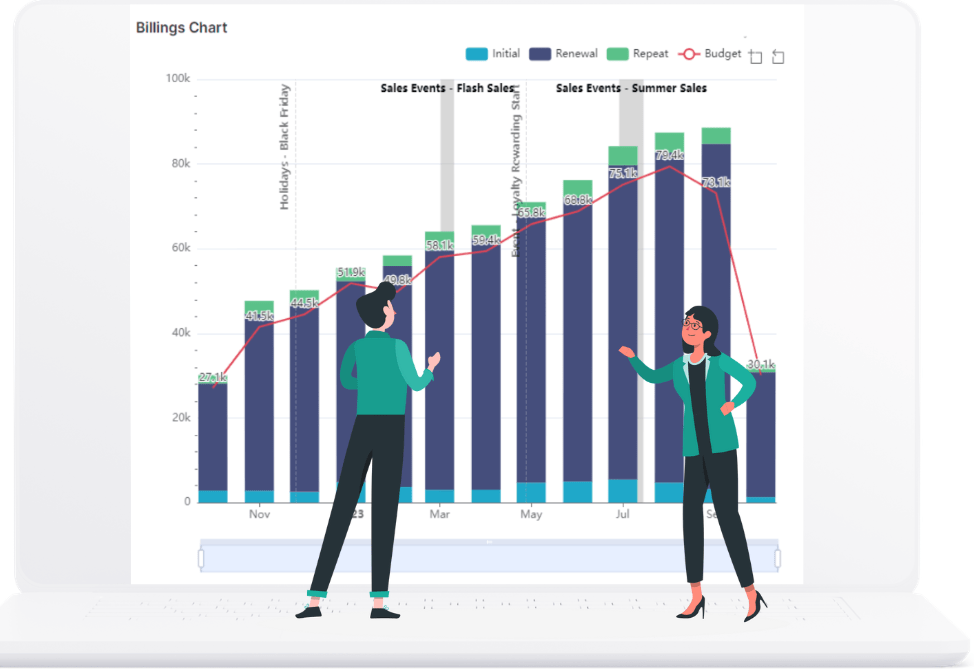How to Build a Business Intelligence Team
In the rapidly evolving business landscape, leveraging data effectively has become crucial for success. To harness the power of data, companies need a well-structured Business Intelligence (BI) team and a comprehensive strategy. In this article, we’ll explore the key steps to build a strong BI team and outline a detailed strategy for implementing a successful BI initiative.

1. Formation of Leadership and Executive Support
To kickstart your BI journey, garner support from top leadership. Assign an executive sponsor, preferably a CIO or CTO, who can align technology and business objectives. Establish a leadership team comprising key stakeholders from various departments to ensure comprehensive insights. This team will focus on the overall BI strategy and delivering business value.
2. Defining Objectives Collaboratively
Define your business goals and prioritize them based on urgency and impact. Involve key stakeholders from different departments to contribute to the overall vision. This collaborative approach ensures that BI aligns with specific departmental needs and overarching business objectives.
3. Evaluation of Current Data Infrastructure
Evaluate your existing data infrastructure, identifying strengths, weaknesses, and areas for improvement. Consider current BI technologies and processes. Determine the data you have and what’s needed to meet your objectives. This step lays the foundation for optimizing data usage across the organization.
4. Selecting an Effective Business Intelligence Solution
Select a BI solution that aligns with your strategy. Address data collection, storage, visualization tools, and access governance. Ensure your chosen solution supports both short-term and long-term objectives. This stage involves collaboration between technical and strategic BI teams.


Data Collection and Management
Define data sources, formats, and management responsibilities. Establish standards for data collection, organization, and entry.
Storage and Capacity
Evaluate storage options, considering on-premises or off-site solutions. Plan for scalability to accommodate future data growth.


Align data visualization tools with the needs of diverse users. Consider simplicity or complexity based on data literacy levels.
Data Access and Governance
Define user access levels and governance policies. Address security measures to protect against external threats.

5. Strategic Planning for BI Execution
Map out timelines and milestones for each phase of your BI strategy. Communicate changes effectively, including the introduction of new storage solutions, data collection practices, and analytics tools. Identify potential roadblocks and establish measures to prevent delays.
6. Holistic Training and Continuous Improvement
Comprehensive Training Programs: Prioritize thorough and ongoing training for employees at all levels, considering various learning styles and ensuring a holistic understanding of BI tools.
Promoting Long-term Data Literacy: Extend the training timeline to foster continuous improvement in data literacy, empowering employees to make informed decisions consistently throughout the organization. Implement the BI strategy according to predefined timelines, closely monitor each phase for potential adjustments, and regularly assess KPIs, sharing successes with stakeholders to celebrate achievements driven by data-informed decision-making.
Navigating Challenges in Hiring BI Professionals for Team Success
Hiring in-house Business Intelligence (BI) professionals is a critical component of building a successful BI team, but it comes with its own set of challenges. The process typically begins with the identification of skilled BI candidates, and this can be a daunting task due to the high demand for such expertise. Companies often struggle to attract qualified applicants, especially those who possess a combination of technical proficiency and a deep understanding of business processes.

Once potential candidates are identified, the interview process becomes crucial. Conducting effective BI interviews requires a blend of technical assessments and an evaluation of candidates’ ability to translate data insights into actionable business strategies. Selecting the right people is challenging, as BI roles demand a unique skill set that includes data analysis, communication, and business acumen.
The delay in hiring BI professionals can also be a common issue. The competitive job market often leads to negotiations and counteroffers, elongating the time between identifying the right candidate and their actual start date. This delay can impede the timely implementation of BI initiatives, affecting the company’s ability to harness data for informed decision-making.
Outsourcing BI: A Faster, Cost-Effective, and Flexible Solution
While building an in-house BI team is commendable, outsourcing to a specialized provider like Qmantic offers distinct advantages. Qmantic provides not just a team but a full tech stack, making BI implementation faster, less expensive, and more flexible. Outsourcing allows companies to benefit from expert insights, state-of-the-art technology, and a dedicated team, ensuring a seamless BI implementation.
Conclusion

Crafting a successful BI strategy involves meticulous planning, collaboration, and continuous evaluation. By following these steps and considering outsourcing to specialized providers like Qmantic, companies can establish a robust BI team, implement a comprehensive strategy, and propel themselves towards data-driven success. In an era where data is a competitive advantage, investing in BI is an investment in the future.





